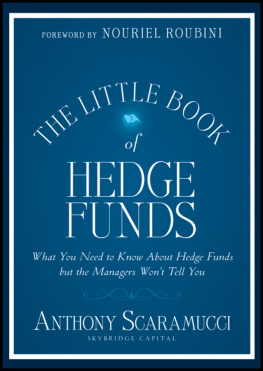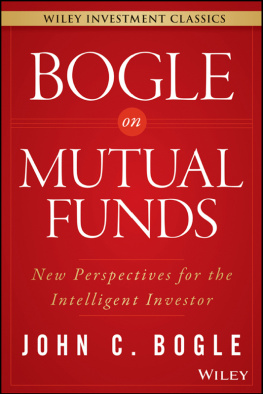THE BOND BOOK
THE BOND BOOK
Everything Investors Need to Know
about Treasuries, Municipals, GNMAs,
Corporates, Zeros, Bond Funds,
Money Market Funds, and More
Third Edition
Annette Thau


Copyright 2011, 2001, 1992 by Annette Thau. All rights reserved. Except as permitted under the United States Copyright Act of 1976, no part of this publication may be reproduced or distributed in any form or by any means, or stored in a database or retrieval system, without the prior written permission of the publisher.
ISBN: 978-0-07-171309-2
MHID: 0-07-171309-3
The material in this eBook also appears in the print version of this title: ISBN: 978-0-07-166470-7, MHID: 0-07-166470-X.
All trademarks are trademarks of their respective owners. Rather than put a trademark symbol after every occurrence of a trademarked name, we use names in an editorial fashion only, and to the benefit of the trademark owner, with no intention of infringement of the trademark. Where such designations appear in this book, they have been printed with initial caps.
McGraw-Hill eBooks are available at special quantity discounts to use as premiums and sales promotions, or for use in corporate training programs. To contact a representative please e-mail us at bulksales@mcgraw-hill.com.
This publication is designed to provide accurate and authoritative information in regard to the subject matter covered. It is sold with the understanding that neither the author nor the publisher is engaged in rendering legal, accounting, securities trading, or other professional service. If legal advice or other expert assistance is required, the services of a competent professional person should be sought.
From a Declaration of Principles Jointly Adopted by a Committee of the American Bar Association and a Committee of Publishers
TERMS OF USE
This is a copyrighted work and The McGraw-Hill Companies, Inc. (McGraw-Hill) and its licensors reserve all rights in and to the work. Use of this work is subject to these terms. Except as permitted under the Copyright Act of 1976 and the right to store and retrieve one copy of the work, you may not decompile, disassemble, reverse engineer, reproduce, modify, create derivative works based upon, transmit, distribute, disseminate, sell, publish or sublicense the work or any part of it without McGraw-Hills prior consent. You may use the work for your own noncommercial and personal use; any other use of the work is strictly prohibited. Your right to use the work may be terminated if you fail to comply with these terms.
THE WORK IS PROVIDED AS IS. McGRAW-HILL AND ITS LICENSORS MAKE NO GUARANTEES OR WARRANTIES AS TO THE ACCURACY, ADEQUACY OR COMPLETENESS OF OR RESULTS TO BE OBTAINED FROM USING THE WORK, INCLUDING ANY INFORMATION THAT CAN BE ACCESSED THROUGH THE WORK VIA HYPERLINK OR OTHERWISE, AND EXPRESSLY DISCLAIM ANY WARRANTY, EXPRESS OR IMPLIED, INCLUDING BUT NOT LIMITED TO IMPLIED WARRANTIES OF MERCHANTABILITY OR FITNESS FOR A PARTICULAR PURPOSE. McGraw-Hill and its licensors do not warrant or guarantee that the functions contained in the work will meet your requirements or that its operation will be uninterrupted or error free. Neither McGraw-Hill nor its licensors shall be liable to you or anyone else for any inaccuracy, error or omission, regardless of cause, in the work or for any damages resulting therefrom. McGraw-Hill has no responsibility for the content of any information accessed through the work. Under no circumstances shall McGraw-Hill and/or its licensors be liable for any indirect, incidental, special, punitive, consequential or similar damages that result from the use of or inability to use the work, even if any of them has been advised of the possibility of such damages. This limitation of liability shall apply to any claim or cause whatsoever whether such claim or cause arises in contract, tort or otherwise.
TO FRED
CONTENTS
PREFACE
This is the third edition of a book that was initially published in December of 1991. After working for a number of years as a credit analyst, I had started personally investing in bonds. At the time, I looked for a book that would explain in clear English some of the basic concepts used by professionals to manage bond portfolios; and that would contain detailed information about the various types of bond investments available to individual investors. None of the books I found fit that description. Most books that dealt seriously with bonds were not comprehensible to anyone who was not a finance professional. Years later, I decided to write the kind of book I would have liked to have read. Evidently, it would fill a need. Little did I imagine when the first edition was published that I would be revising this book again, for the third time, almost 20 years later.
Over the past 20 years, both the bond market and the stock market have had dramatic ups and downs. Investor psychology toward the bond market has also had its ups and downs. For example, the second edition of this book was written around the year 2000. In retrospect, that was almost the last year of the great bull market in stocks that had started in 1982. At that time, pundits were proclaiming that we were in a new era. Experts were recommending that individuals invest 100% of their portfolios in equities (or perhaps keep a small percentage, say 10%, in cash), and nothing at all in bonds. The decade between 2000 and 2010 proved the experts wrong. Between 2000 and 2010, the stock market suffered two devastating bear markets: in 2002 and in 2008. Even though many sectors of the bond market suffered significant declines during the financial panic of 2008, for that decade, investments in many sectors of the bond market had positive returns and enabled investors to ride out a lost decade in the stock market.
Investor psychology seems to have changed once more: for the past year, more money has been flowing into bond funds than into stock funds. But if these flows reflect the search for a safe harbor, then some investors may be in for an unpleasant surprise. Investors need to be aware that all sectors of the bond market are not equally safe and predictable. Many bonds and bond funds are as volatile and unpredictable as stock funds, posting equity like returns one year, and dismal losses the next. Indeed, some steep losses have occurred in bond funds that had been initially marketed as very low risk investments.
This book, like prior editions, is intended to be a complete introduction to the bond market and to the different types of investments in bonds: individual bonds, as well as different types of bond funds.
There is virtually no section of this book that has not been heavily or totally rewritten. My emphasis has been on changes that have occurred since the 2000 edition. One of the more important changes is that investors can now access a great deal of information, such as pricing data, that in the past was available only through brokers. That information is available on the Internet, and it is free. In addition, all chapters on individual securities include new information. The chapters on bond funds have been totally rewritten. They include a detailed analysis of the performance of all types of bond funds, during and since the financial panic of 2008, as well as ten-year returns through December 2009. There is also a new section on bond exchange-traded funds (ETFs) as well as an expanded section on closed-end bond funds.
Next page






